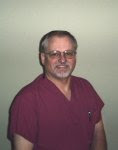Non-surgical treatment methods are available for degenerative disc disease and osteoarthritis changes and resulting problems in the neck and back and joints. These treatment protocols are lower cost, non-invasive and therefore of lower risk. Many complications exist out of osteoarthritic/degenerative changes: sciatica, radiating arm pain, numbness/tingling, spinal stenosis, spinal deformity, loss of mobility, chronic pain.
Treatment Goals for patients depends on the nature and severity of the symptoms. Patients with spinal stenosis (narrowing of the spinal openins) or radiating pain (radiculopathy, sciatica, radiculitis) may require a multi-treatment approach. The following are some of the methods used by doctors of chiropractic to help minimize the need for patient surgery.
- Manipulation-low force or traditional manual techniques to retore normal spinal joint motion. Flexion-distraction and other traction oriented methods may also be used.
- Nerve mobilization techniques to release nerves entrapped by adhesions, etc.
- Physiotherapy modalities (physical medicine) such as interferential current, ultrasound, deep tissue therapy, postural restoration, and temperature therapy, etc. to treat pain and disability complaints.
- Exercise/rehabilitation protocols to restore strength and function and stabilize core muscles.
- Nutritional supplementation to reduce inflammation and support disc and cartilage structures.
- Medical referral for epidurals, surgical consultations in non-responsive cases or cases of severe pain/deterioration.
- H1N1 virus (swine flu) from Medscape. Persons infected with swine flu may appear similar to those with seasonal influenza, presenting with symptoms of acute respiratory illness. Symptoms include at least 2 of the following: Rhinorrhea or nasal congestion; Sore throat; Cough; and Fever. Most at risk include- those who live in areas in the United States with confirmed human cases of swine influenza A (H1N1) virus infection. (To find the most up-to-date information on areas with confirmed swine influenza cases, go to http://www.cdc.gov/swineflu/index.htm) . Also those who have traveled recently to Mexico or were in contact with persons who had febrile respiratory illness and were in areas of the United States with confirmed swine influenza cases or Mexico in the 7 days preceding illness onset. Treatment is anti-viral medications depending on age.
- Aspirin and other platelet medications may increase micro-bleeds in the brain.
- The first quarter of 2008 saw a large increase in serious injuries and deaths linked to prescription medication. Top drugs causing death/injury: Chantix-a stop smoking drug; warfarin-increased with tainted drugs from China; ibuprofen and acetaminophen-OTC pain killers; and other pain mediations/narcotics. Remember: all medications have the potential for serious side effects.
Guidelines on Female Exams from the American College of Obstetrics and Gynecology
- <21> No routine exams unless problems.
- 21-29 routine pelvic examination and cytology. Sexually active less that age 25 should be screened for chlamydia and adolescents for gonorrhea.
- 30-64 annual pelvic and cytology reduced to every 2-3 years after 3 normal exams.
- All adolescents and 19-64 sexually active females should be screened for HIV.
- 64+ annual pelvic. No cytology if 3 negative exams and no relevant history.
Nutrition News:
Nine foods that help keep weight off: green tea, soups, low-cal green salads, yogurt, water, lite die shakes, beans, whole grain/high fiber cereals, grapefruit.
Alternative Health/Chiropractic News:Consumer Reports says in its May issue that 80% of adults in the U.S. report having been bothered by back pain at some point in their lives. The Consumer Reports Health Ratings Center surveyed 14,000 subscribers who reported experiencing back pain in the past year but who had never undergone back surgery. More than half said the pain severely limited their daily routines for at least a week, and many said it interfered with sex, sleep, and weight control.
It found that:
88% of respondents said back pain recurred through the year.
35% said they’d never consulted a professional to help with lower back pain.
Of those who’d sought help:
58% said chiropractic manipulation had helped a lot.
48% said massage had eased their pain.
46% said physical therapy had benefited them.
The respondents were also asked about their satisfaction with various treatments. Of those reporting they were highly satisfied:
59% had seen chiropractors
55% had seen physical therapists
53% had seen acupuncturists
44% had seen physician specialists
34% had seen primary care doctors



